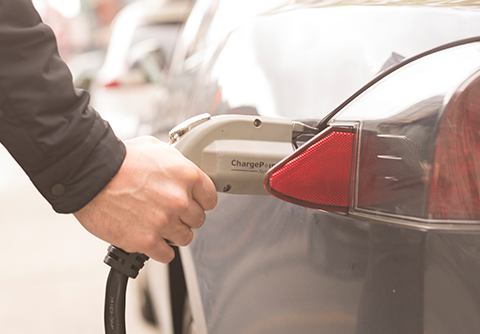
Copper: part of a sustainable future
Copper – often called the “red metal” for its characteristic colour – is also known as a “green” metal because of its role in addressing environmental challenges.


Energy efficiency
 Copper’s conductive properties are needed in electric vehicle technology
Copper’s conductive properties are needed in electric vehicle technology
Rio Tinto produces copper in the US, Mongolia, Chile and Indonesia. The metal is the best non-precious conductor of electricity, meaning items that contain copper tend to operate more efficiently. Energy-efficient products release less carbon dioxide into the atmosphere, helping to address climate change.
Copper’s properties make it an essential component of renewable energy sources such as solar, wind, geothermal and hydro-electric power. These systems rely on copper to generate and transmit energy with maximum efficiency and minimum environmental impact.
The superior conductive properties of copper are also needed in electric vehicle technology, including in the charging stations and other infrastructure that supports them.
Lesser-known metals accessed through copper production present opportunities too. In the US, Rio Tinto is partnering with the Critical Materials Institute to pioneer new and better ways to recover metals such as scandium, rhenium and selenium, important ingredients for consumer electronics and in the production and storage of clean energy.
Solving societal challenges
Copper has wider societal benefits too. It’s naturally antimicrobial, and using copper surfaces in hospitals has been proven to reduce the spread of infection.
 Copper is an essential component of renewable energy sources such as wind power.
Copper is an essential component of renewable energy sources such as wind power.
It is also the most widely used plumbing material in the industrialised world, bringing water into our homes. This is because it’s safe, malleable, impermeable, strong, corrosion-resistant, and recyclable
Copper is a vital part of a sustainable future. From climate change to superbugs, it’s an essential material helping address some of the world’s greatest challenges.
 Copper is widely used in plumbing because it is safe, malleable, strong, impermeable, corrosion-resistant and recyclable.
Copper is widely used in plumbing because it is safe, malleable, strong, impermeable, corrosion-resistant and recyclable.


